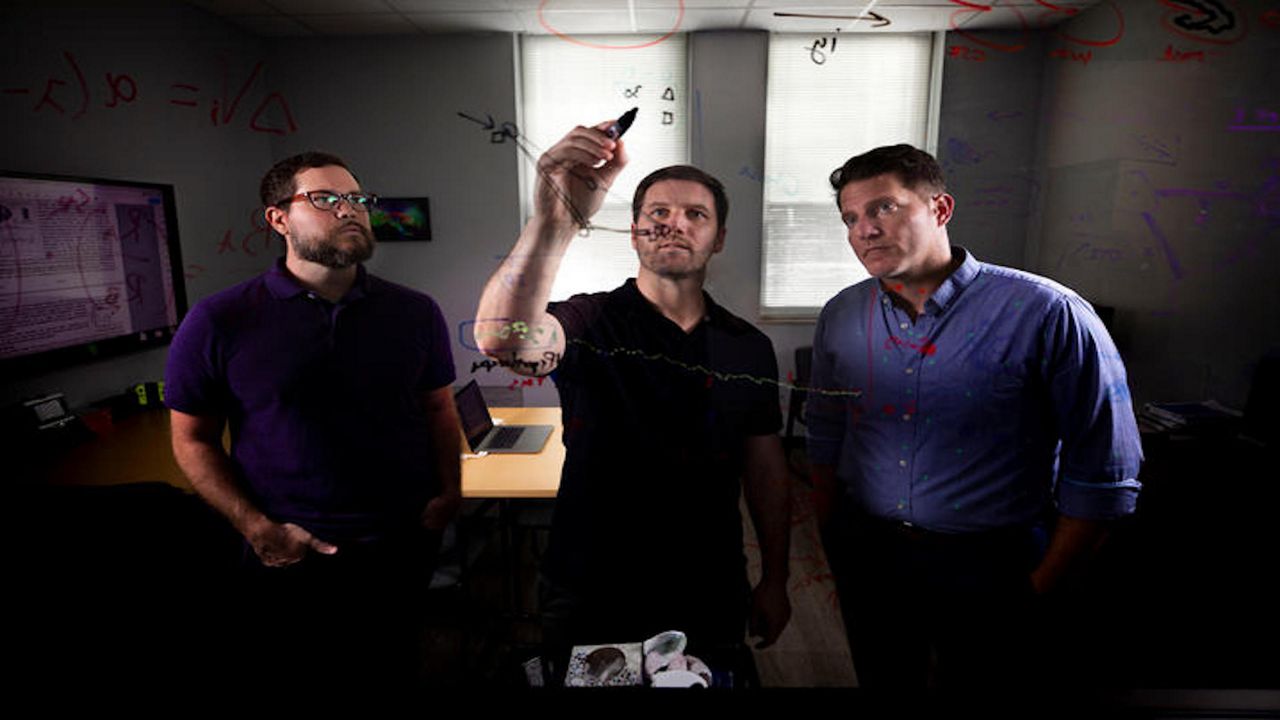LEXINGTON, Ky. — A pair of research projects at the University of Kentucky aim to help healthcare professionals better understand the decision-making process behind addicts’ repeated use of cocaine and opioids and the role the brain has in those decisions.
What You Need To Know
- School receives more than $6 million for two research projects
- One study looks at cocaine addiction
- A second study focuses on opioid use
- Volunteers currently asked to apply
Faculty from the UK Department of Psychology in the College of Arts and Sciences and the Department of Behavioral Science in the College of Medicine has received two five-year Research Project Grants (R01) from the National Institutes of Health (NIH) to study neurobehavioral processes involved in drug use disorders.
The first project, which addresses cocaine use disorder, totals more than $3 million. The second project addresses opioid use disorder and totals more than $3.1 million and is currently accepting volunteers.
Participation as a volunteer in the opioid use research project is available and requires a two-week stay in the hospital. Eligible participants must also be between 18-50 years of age; available during working hours on weekdays; use opioid drugs such as heroin, Lortab, Percocet, or Oxycontin for non-medical reasons; use opioid drugs daily or almost daily; get sick when not using opioids; and not currently seeking treatment for opioid use. Volunteers will be paid for their participation and may be reimbursed for travel. All information obtained by UK will be kept confidential, according to the university,
The multiple principal investigators (PI) for the projects include Joshua Beckmann, associate professor of psychology; Joshua Lile, professor of behavioral science; and Michael Wesley, assistant professor of behavioral science and director of the UK Neurobehavioral Systems Lab. The three PIs also have joint appointments in the College of Arts and Sciences’ neuroscience program.
The Substance Abuse Mental Health Services Administratio (SAMHSA) characterizes cocaine and opioid use disorders by the ongoing decisions addicts make to pursue and use drugs over other available activities and goods. The decision-making processes that underlie the choice to use these drugs, however, are not well understood, according to SAMHSA. Both research projects at UK aim to determine why and how a decision is made by replicating dynamic, real-life environments in which the outcome of decisions is uncertain. Beckmann said research to date is predicated upon testing conditions that minimize the complexity of the context in which these choices occur, and consequently, the decision-making processes.
“Existing literature tells us that choice is dynamic and largely context-dependent,” Beckmann said. “To better understand how decision-making and choice contribute to substance use disorder, we are developing and utilizing multidisciplinary tools to represent and capture the dynamics of drug use decisions and associated processes.”
By using a technique known as probabilistic reinforcement learning choice procedure, along with computational data modeling and neuroimaging/neuromodulation/neurorecording techniques, the researchers will reveal neurobehavioral processes underlying suboptimal choice, according to information from UK.
While the projects have a similar theoretical basis and use overlapping methodologies, the researchers noted the two will involve some important differences. Specifically, the cocaine use disorder project will use established interventions, such as agonist replacement medication and large financial alternatives, to examine mechanisms by which behavior is reallocated away from cocaine use. The opioid use disorder project is more focused on how withdrawal drives continued opioid use.
“Modeling drug-use decisions under more real-world conditions is important because decision-making in dynamic, uncertain environments has been shown to alter the value of competing choice options, and requires continuous updating of option values, which engages neurobehavioral processes that might be functioning abnormally in substance use disorder,” Lile said.
The team emphasized that substance use disorder is highly complex, and the field should strive to continuously adapt its laboratory procedures to more accurately model the features of the condition.
“We believe that our approach is a valuable step forward that will improve our understanding of drug-use decisions and advance the development of improved treatments,” Lile said.
Wesley said the projects are in line with both national and university initiatives to enhance translational and team science.
“These projects integrate our expertise in advanced and diverse methodologies applied simultaneously to preclinical and clinical research, which should minimize the time between scientific discovery and clinical benefit,” he said. “By working together, we offer a better return on investment compared to more typical and diffuse operations. Our coordinated scientific efforts represent an agile, efficient, and innovative approach to quantifying the dynamic nature of decision-making and choice in substance use disorder.”
Beckmann said years of research suggest substance use disorder is a multifaceted condition; “As such, our multidisciplinary approach aims to better understand the multiple facets of substance use disorder and how they interact, with the hope of developing improved treatment strategies,” he said.








